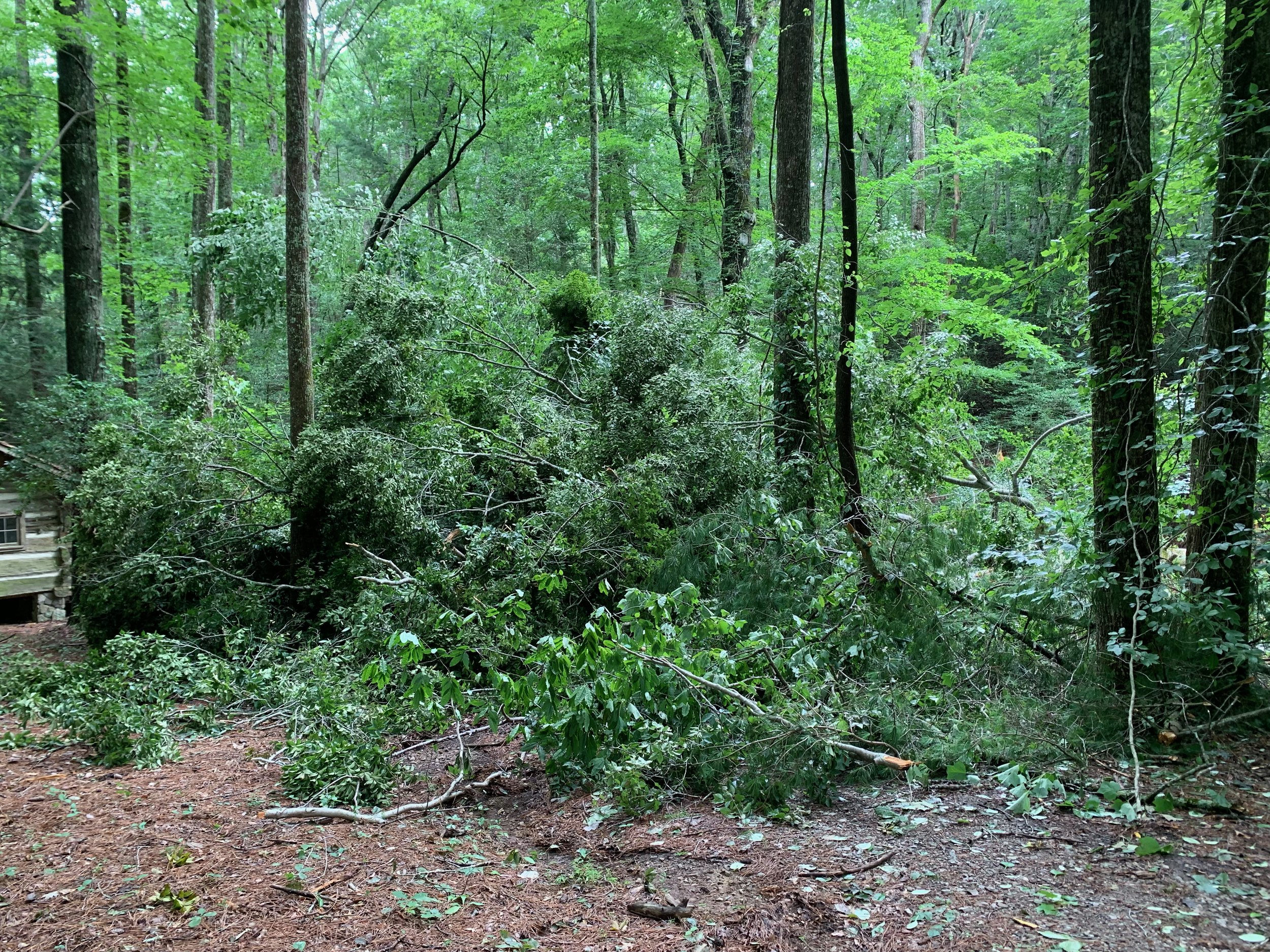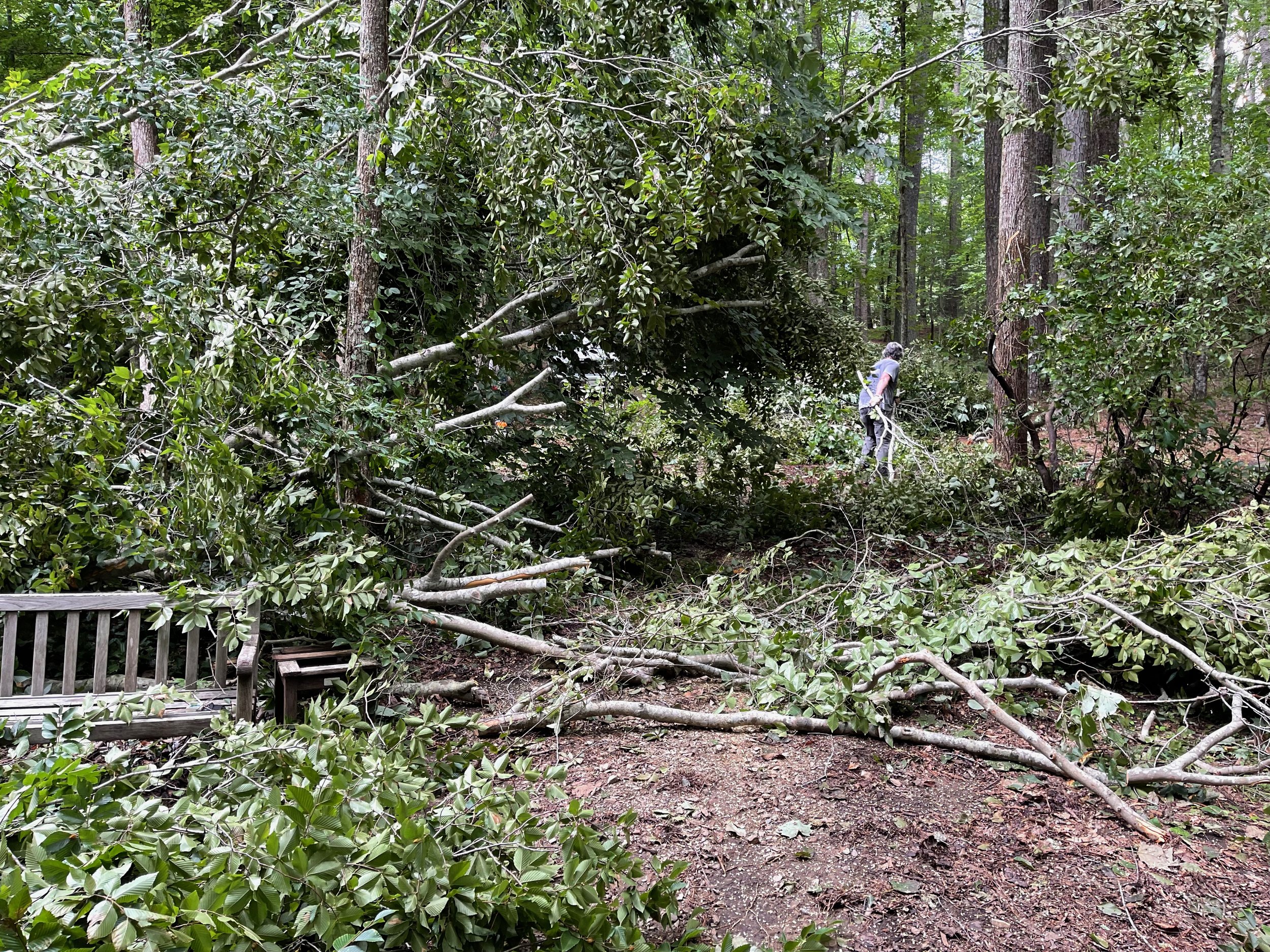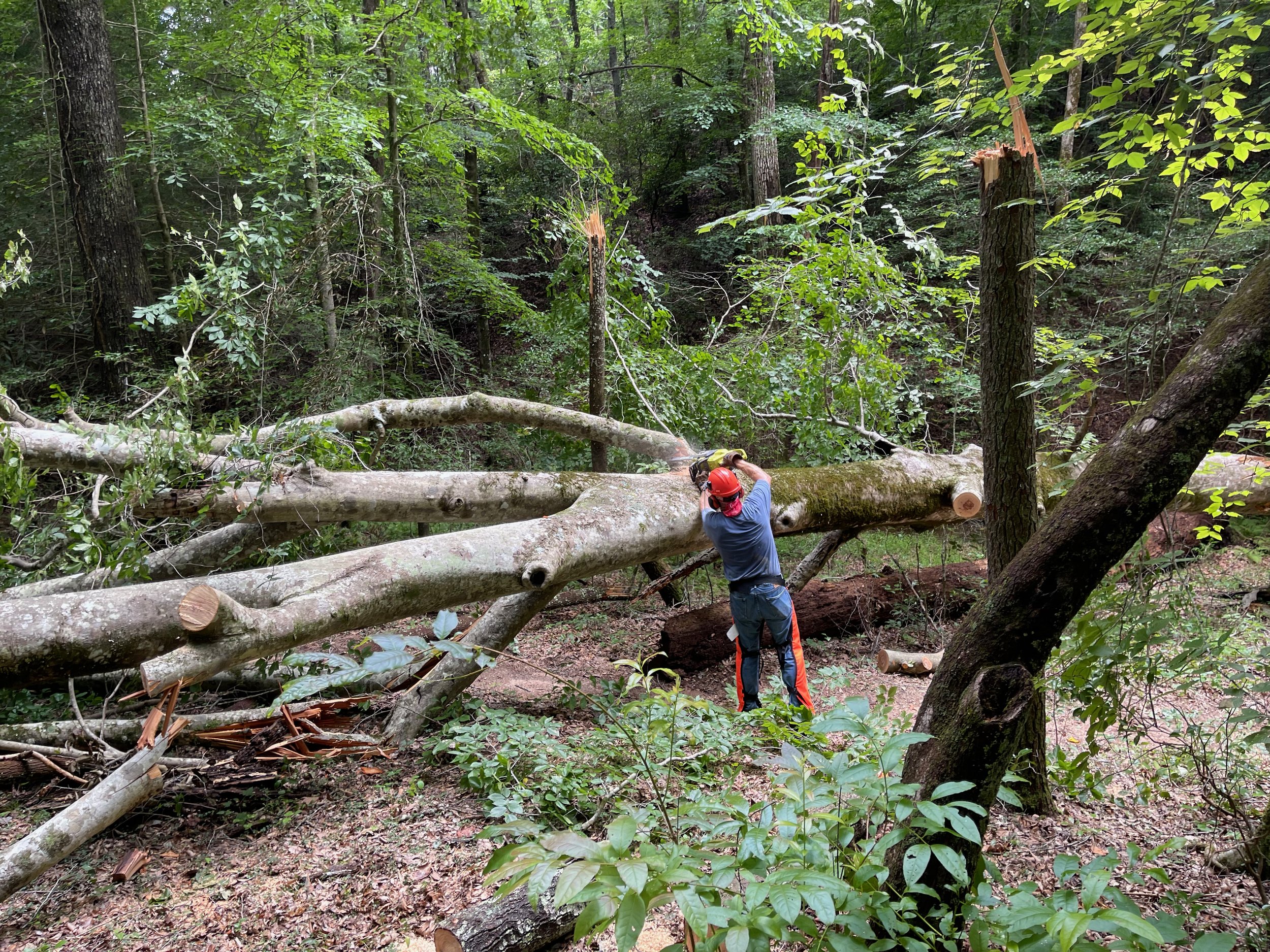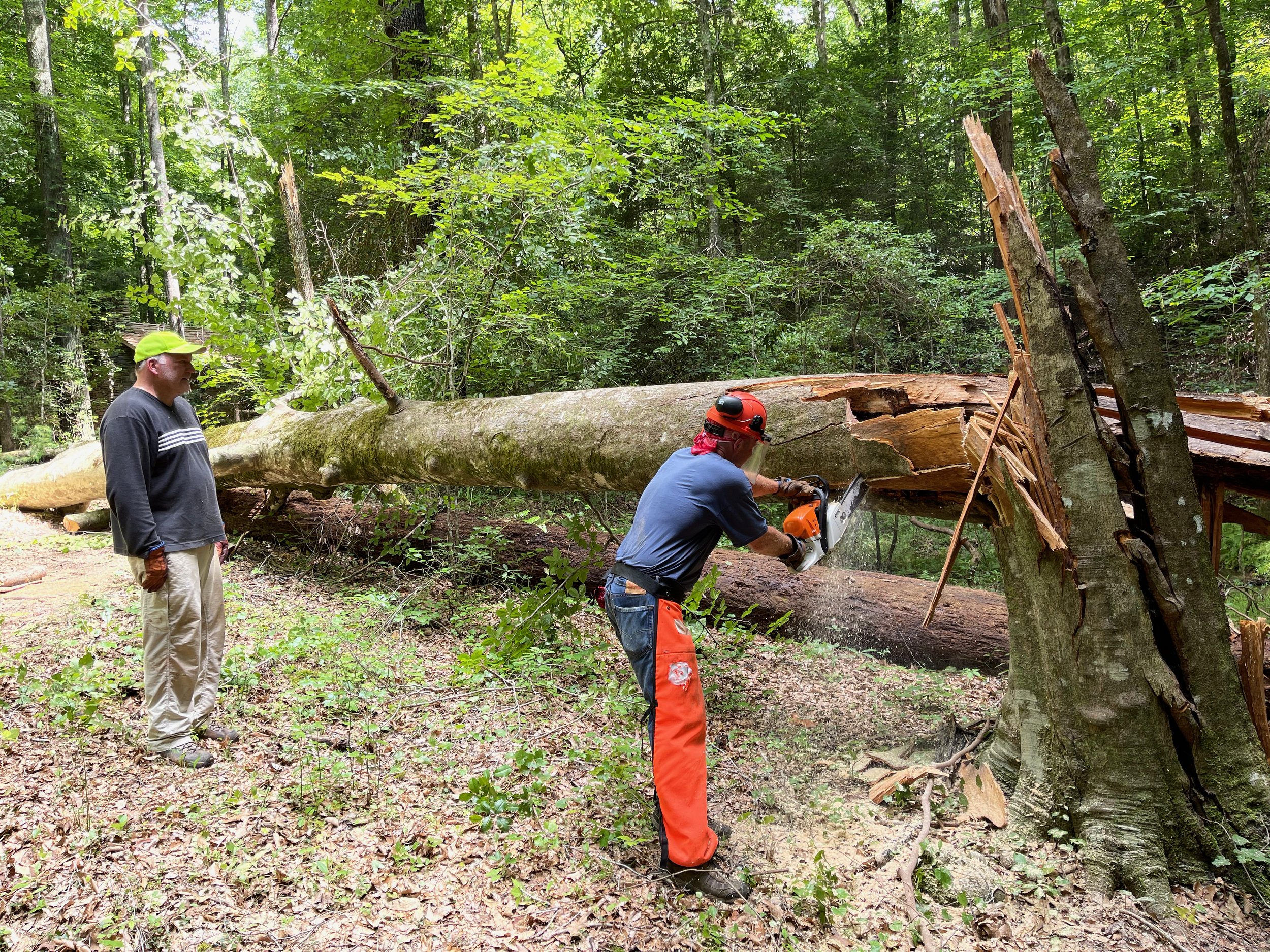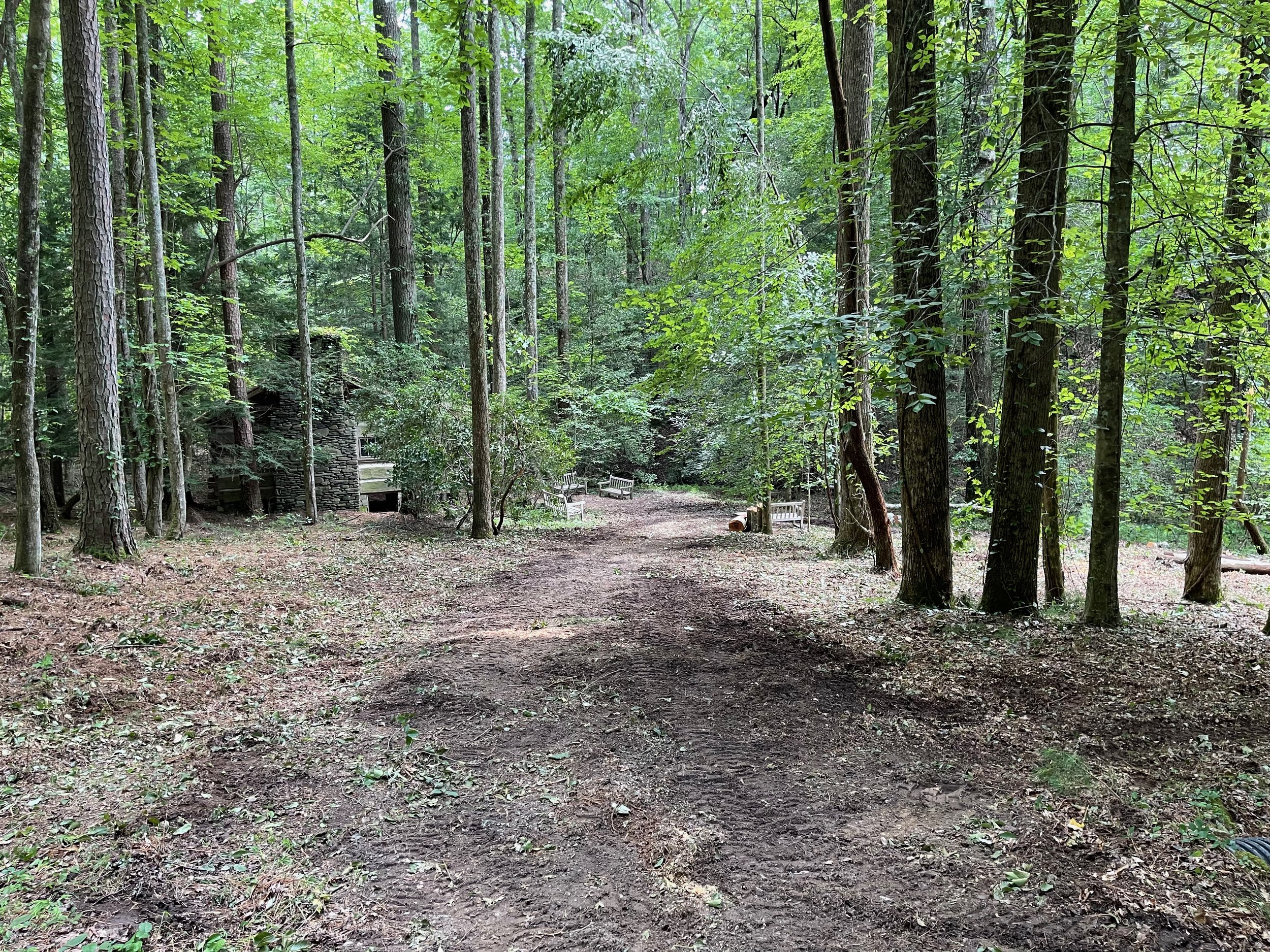What to do when a big tree is down
Coming down from the Terraces area toward the cabin, all you see is a wall of leaves. This is the crown of the tree. Photo by Reg Richard.
Sometimes trees fall. This was the case on a rainy July weekend, where a huge, old beech tree fell at the Meditation Park botanical garden. It lay very near the cabin and narrowly avoided damaging the benches at that location.
Crown limbs being cut and dragged away to a pile.
When a tree of that size falls, about half of the crown is flattened where it’s accessible enough for people with chainsaws and other cutting implements, like loppers, to start cutting out the smaller branches, which need to be dragged out of the way. Once we clear the smaller stems we work our way in toward the larger diameter branches.
Upper branches being cut down so the rest of the crown is accessible for clearing.
But at some point we need to cut at the base the branches that are feeding the part of the crown above our reach. With safety as our first priority, everyone clears the area while a sawyer cuts the large branches at the trunk. When those are on the ground we come back in to clean up the rest of the now-reachable crown limbs.
Cutting up logs into smaller, manageable lengths.
Those manageable lengths are carried away and stacked.
A tree that lies on its side almost always is off the ground by a few feet, its weight held up by one or two large limbs. That might not sound like a big deal, but those limbs are under a lot of pressure causing a lot of tension in the wood. If you start carelessly cutting those supports, you risk having the branch twist or snap in an unexpected direction and with a lot of force, which can also cause the main trunk to shift dangerously. So the sawyer must work with utmost care, a little at a time, listening to the noises the wood makes and observing the slightest movements. But those supporting branches often need to be cut so the main trunk can rest on the ground, stable. Stability is important when there are several tons of wood in a big trunk.
In the distance you can see a big log being moved by one person with the help of a cant hook.
Once the main trunk is on the ground, it can be cut up into short logs that can be rolled out of the way with the aid of cant hooks or bars, or several people pushing.
After the main trunk was set on the ground higher up, it is still hung up on the base. That portion needs to come down too. Steve Papke is working the saw, while Mike Sheely is ready to assist.
So on the Monday following the blowdown at the cabin, 8 members of the trails committee gathered with their tools to clear it up. We cleaned up the crown, brought branches and worked our way toward the main trunk. This tree rested its weight on 2 sturdy branches, which Steve Papke and Bill Merrick skillfully cut with their large gas-powered chainsaws. The group methodically cut up every part of the tree, leaving the main trunk on the ground after cutting as much as possible.
Reg Richard used many of the logs to accent the trail.
Normally we drag the limbs into the woods, but this is an open location featuring the cabin in a park like scenery, so we could not easily conceal that volume of limbs. We consulted with the POA who graciously sent a truck with a chipper to haul away the branches we had pile up the following day.
Done working, the crown is now a pile of limbs ready for the chipper.
Next time you go walk the trails at the Meditation Park, take a look at the remaining trunk and marvel that a tree of that size managed not to damage the cabin or even the benches.
Next day the contractor with the chipper came by and picked up the limbs. Trail is now fully open. Compare this with the first photo. Photo by Reg Richard.

